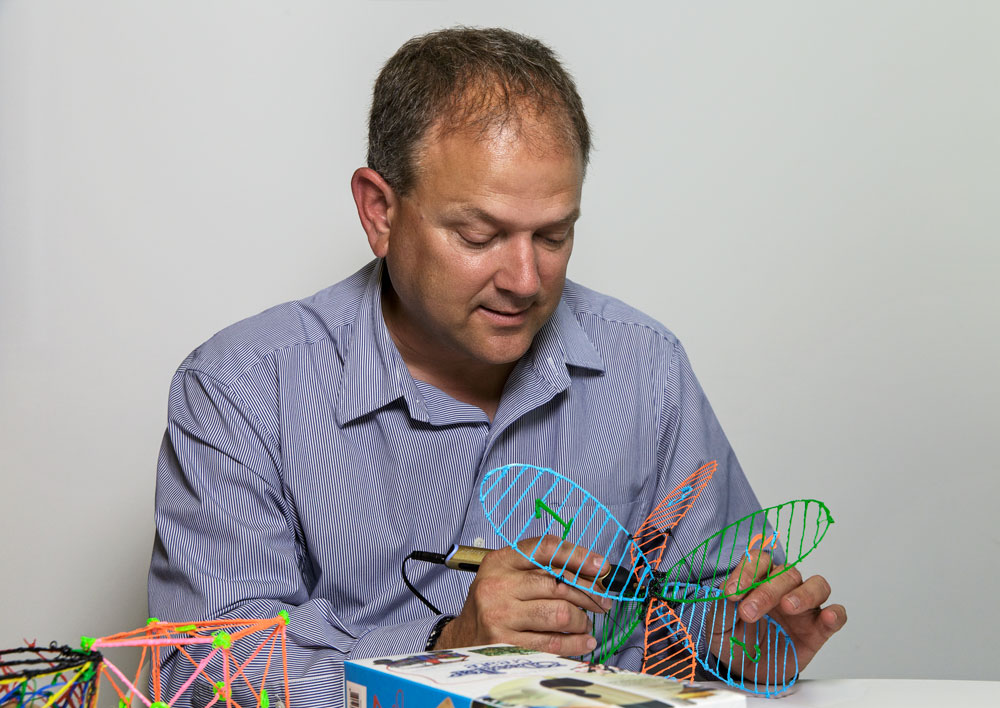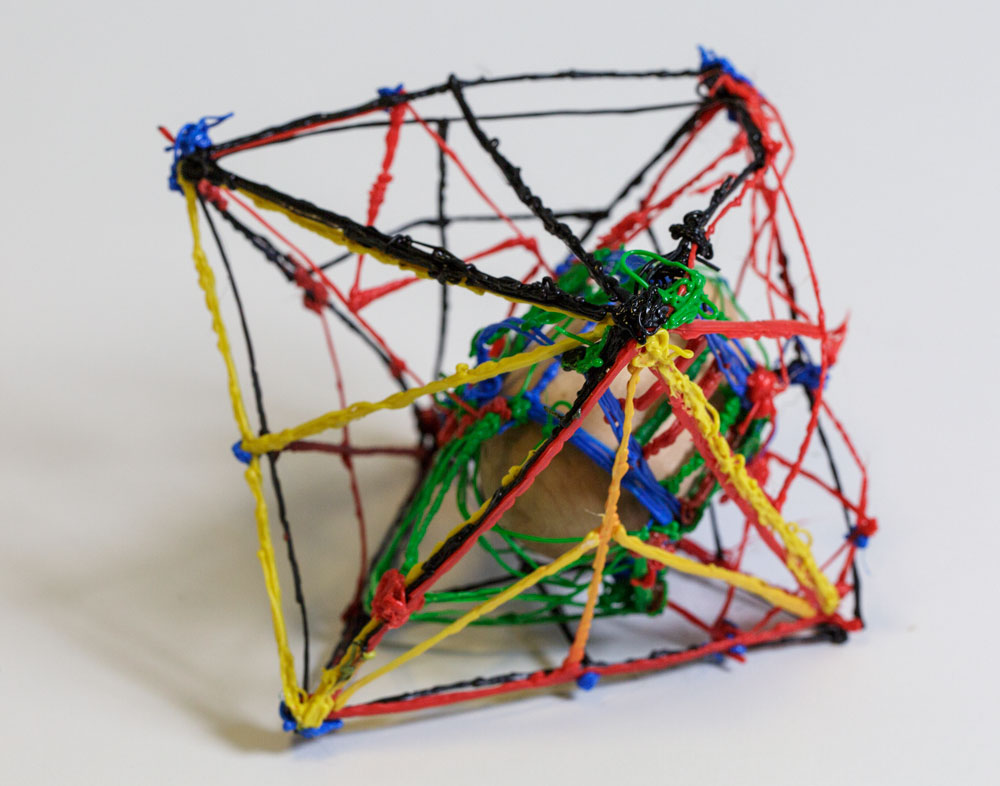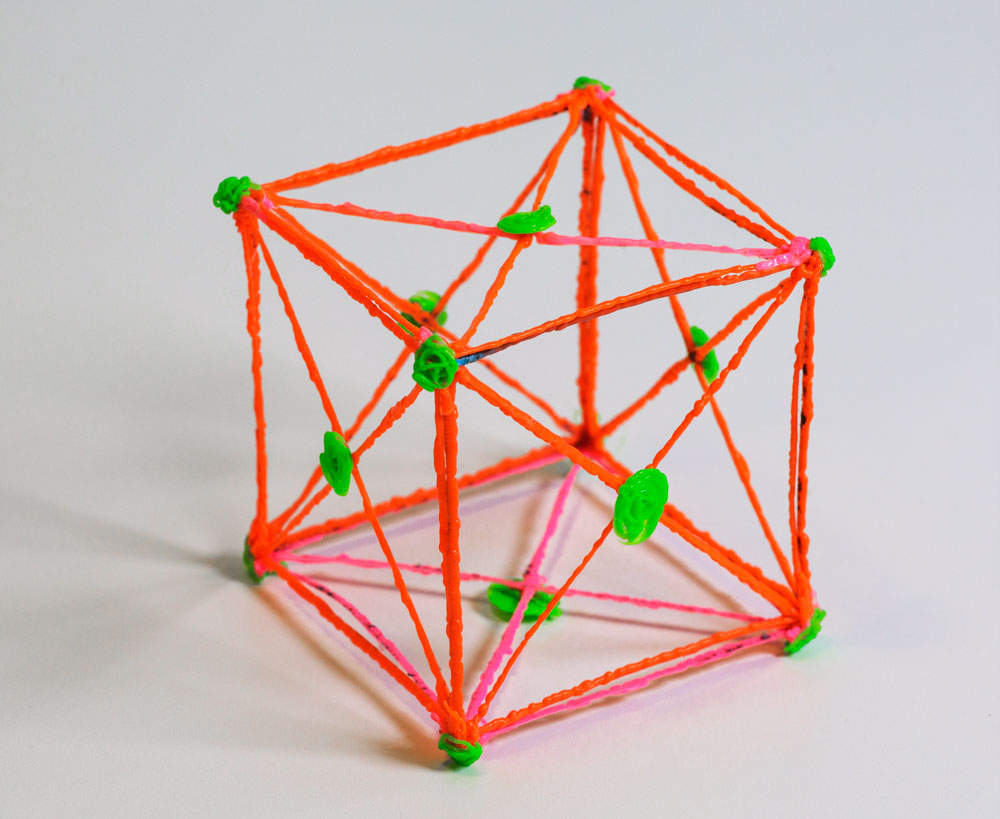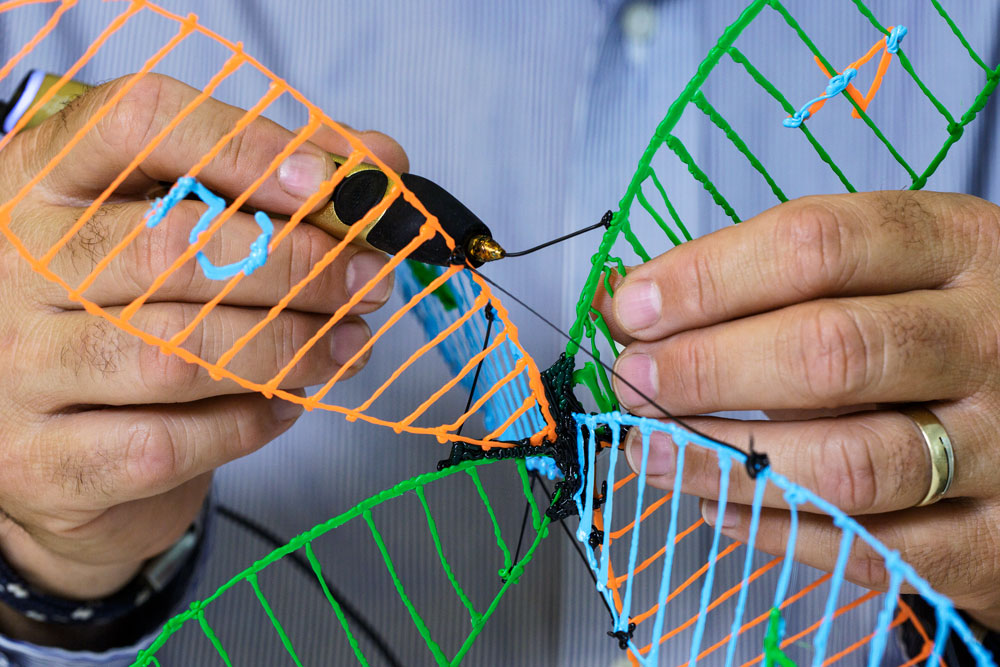What is the best way to learn the physics behind bridges? By building one.
To build a functional bridge, it’s important to have a strong backing in the basics of physics, Newton’s Laws, the properties of matter, and other rules and facts that describe our world—but it can be hard to see how they all work together at the same time. The best way to learn about bridges is to build them. And that’s just what they do in Glenn Couture’s class.
Getting the Drop on Science
Couture teaches Honors and AP physics at a high school in Norwalk, Connecticut. During the school year he guides students through a wide range of topics that make up physics. These include kinematics, the relationship between work, power and energy, waveforms, thermodynamics, fluid dynamics, electricity and light.

A key part of teaching these topics is taking abstract descriptions of how physics work, and letting students experience them first hand.
"Small changes to the project can prove to be outsized challenges that send students back to the drawing board." Share
Getting through those disparate topics can take a good chunk of time, but Couture caps off many of the units with physical projects. These let students apply what they’ve learned in class to a real-world problem, demonstrating that they haven’t just learned information, but they have an understanding of how to use it.
We gave Couture a 3Doodler Create and asked him to come up with exciting ways he could incorporate it into his lesson plans. One of the first things he looked at was the classic “egg drop” experiment.
Extreme Packaging
“In the current rendition of the egg drop, the students are only allowed to use plastic drinking straws, any sort as long as there’s no paper on them, masking tape, and one raw, uncooked, uncoated, unpainted egg. The idea is to have the egg land without breaking,” Couture said.
When it comes to the actual design of the project, he has only one limitation: “It has to fit through the door of the classroom. I’ve had students come close with that depending on how many straws they’re using.” The eggs and their straw enclosures are then brought to the school’s roof and dropped 55 feet to the ground. Only those students who have eggs survive the fall receive an A.

Couture wants to attempt a variation on that project using the 3Doodler, with some new constraints. “This could be done on a smaller scale, directly in the classroom,” Couture said while examining a prototype 3Doodler egg cage. “I don’t think that it could work the full distance of 55 feet, but 16 or 18 feet would work.”
He envisions a second round of testing, while providing only a limited number of rods to students. This would add a component of “cost effectiveness” to the project. In the real world, engineers often have limited materials to work with, and need to find ways to balance competing goals.
“We had a chance to visit with the packaging engineers at a [cookie manufacturer] where they have to package things to be in trucks and things like that. So there’s that application of what they learn in the egg-drop, where they keep a product from breaking up, but we can also go bigger and look at the failed Mars Climate Orbiter of the 90’s where the probe was lost because of an error translating metric and imperial units.” Small changes to the project can prove to be outsized challenges that send students back to the drawing board.
Model Atomic Behavior
Other projects that Couture was able to develop during his time with the 3Doodler include more illustrative of processes in physics. He built a prototype model of a side-face molecule placement crystal.

“In chemistry, solids form crystals,” he explained while showing off the cube, a helpful tool for visualizing the relationship between molecules in a crystal lattice.
"I sometimes find that students have difficulty taking a concept from 2D to 3D and vice versa." Share
The 3Doodler offers an advantage for these models by producing long lasting models which illustrate the stability of various crystal types. Couture said that he would like to let groups of students work on different crystals and build up a collection of varieties over time.
“I sometimes find that students have difficulty taking a concept from 2D to 3D and vice versa,” Couture added. He feels that the 3Doodler is a unique opportunity to bridge that gap, as well as more literal ones.
Building Bridges
Another physical project that Couture’s students engage in is called “Quakertown.” Students create buildings out of folded paper that must withstand both the addition of weights and a mechanically shaken table to simulate both static and dynamic loads.

Students in his classes could one day create bridges using the 3Doodler to understand the how these complex structures operate, and compare the strengths and weaknesses of different designs.
"On the page, it’s easy to understand the X axis and the Y axis, but having it in 3D really helps you grasp the Z axis." Share
Couture put together a Parker Truss bridge, using a template from online. He chose the design because its gentle curve would be hard to replicate using other craft methods. However, Couture felt the 3Doodler was easily up to the task, especially after he had cut his teeth putting together other projects.
Teaching in 3 Dimensions
The last of the four samples he produced was a model of the orbitals which describe where electrons orbiting the nucleus of an atom might be found.

“On the page, it’s easy to understand the X axis and the Y axis,” Couture explained as he put the finishing touches on the model, “but having it in 3D really helps you grasp the Z axis.”
After spending some time exploring the possibilities of the 3Doodler, Couture describes himself as interested in finding even more uses for the tool. It opens up unique opportunities to explore the world of physics. And those opportunities extend beyond his own classroom.
“My wife teaches seventh and eighth grade science, and she’s interested in it too. They do a bridge project using toothpicks and glue. The problem with that is it takes so long for the glue to set but this is practically instant.”
New STEM fields are emerging all the time, and rising to those challenges will require a mixture of hands-on experience, creativity, and intuitive knowledge. Couture’s time with the 3Doodler has shown just a few ways that it can help provide just that.![]()




